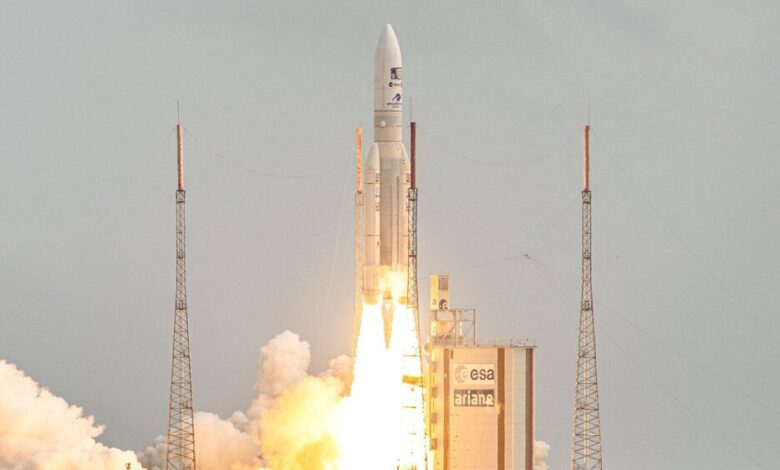
The rocket carrying the Jupiter Icy Moons Explorer launches from French Guiana on April 14. Photo Credit: Jody Amiet/AFP via Getty Images
Technology EuropeSeeking Signs of Water and Life: Jupiter’s Biggest Moons Under the Microscope
Jupiter’s three largest icy moons will be the object of the European Space Agency’s latest exploration for scientists to further their knowledge of the lunar surfaces, what might lie beneath them, and discover if life ever existed on those moons.
“The main goal is to understand whether there are habitable environments among those icy moons and around a giant planet like Jupiter,” explains Olivier Witasse, a planetary scientist and team member of the Jupiter Icy Moons Explorer. “If I had one objective to highlight, it is the need to know more about the liquid water underneath the surface of the icy moons.”
The Jupiter Icy Moons Explorer, also known as Juice, is focused on studying Jupiter, the fifth planet in our solar system, along with its three largest moons, Ganymede, Callisto, and Europa. The spacecraft will take eight years to reach Jupiter, with the help of flybys around our Moon, the Earth, and Venus to save fuel. Juice is programmed to reach Jupiter in July 2031 where, over the following three years and a half, it will do flybys around the three moons suspected to contain water. Europa, for example, is believed to have a salty ocean, and according to NASA, it is also one of the best places to search for life in the solar system. Juice’s ten instruments will be used to study the moon’s atmosphere, the magnetic field and radiation of Jupiter, and the lunar orbs’ hospitability for life.



